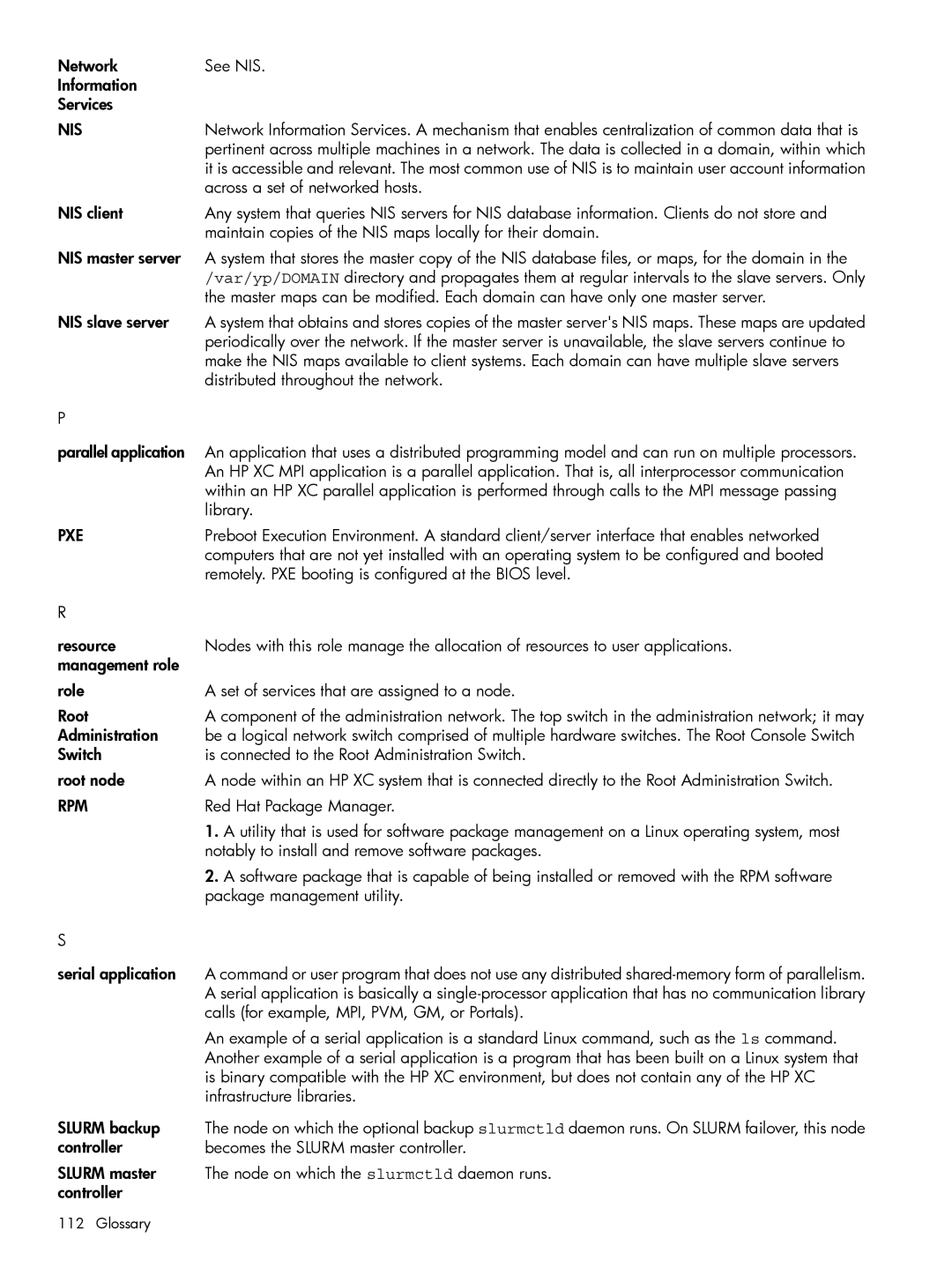Network | See NIS. |
Information |
|
Services |
|
NIS | Network Information Services. A mechanism that enables centralization of common data that is |
| pertinent across multiple machines in a network. The data is collected in a domain, within which |
| it is accessible and relevant. The most common use of NIS is to maintain user account information |
| across a set of networked hosts. |
NIS client | Any system that queries NIS servers for NIS database information. Clients do not store and |
| maintain copies of the NIS maps locally for their domain. |
NIS master server | A system that stores the master copy of the NIS database files, or maps, for the domain in the |
| /var/yp/DOMAIN directory and propagates them at regular intervals to the slave servers. Only |
| the master maps can be modified. Each domain can have only one master server. |
NIS slave server | A system that obtains and stores copies of the master server's NIS maps. These maps are updated |
| periodically over the network. If the master server is unavailable, the slave servers continue to |
| make the NIS maps available to client systems. Each domain can have multiple slave servers |
| distributed throughout the network. |
P |
|
parallel application | An application that uses a distributed programming model and can run on multiple processors. |
| An HP XC MPI application is a parallel application. That is, all interprocessor communication |
| within an HP XC parallel application is performed through calls to the MPI message passing |
| library. |
PXE | Preboot Execution Environment. A standard client/server interface that enables networked |
| computers that are not yet installed with an operating system to be configured and booted |
| remotely. PXE booting is configured at the BIOS level. |
R |
|
resource | Nodes with this role manage the allocation of resources to user applications. |
management role |
|
role | A set of services that are assigned to a node. |
Root | A component of the administration network. The top switch in the administration network; it may |
Administration | be a logical network switch comprised of multiple hardware switches. The Root Console Switch |
Switch | is connected to the Root Administration Switch. |
root node | A node within an HP XC system that is connected directly to the Root Administration Switch. |
RPM | Red Hat Package Manager. |
| 1. A utility that is used for software package management on a Linux operating system, most |
| notably to install and remove software packages. |
| 2. A software package that is capable of being installed or removed with the RPM software |
| package management utility. |
S |
|
serial application | A command or user program that does not use any distributed |
| A serial application is basically a |
| calls (for example, MPI, PVM, GM, or Portals). |
| An example of a serial application is a standard Linux command, such as the ls command. |
| Another example of a serial application is a program that has been built on a Linux system that |
| is binary compatible with the HP XC environment, but does not contain any of the HP XC |
| infrastructure libraries. |
SLURM backup | The node on which the optional backup slurmctld daemon runs. On SLURM failover, this node |
controller | becomes the SLURM master controller. |
SLURM master | The node on which the slurmctld daemon runs. |
controller |
|
112 Glossary
